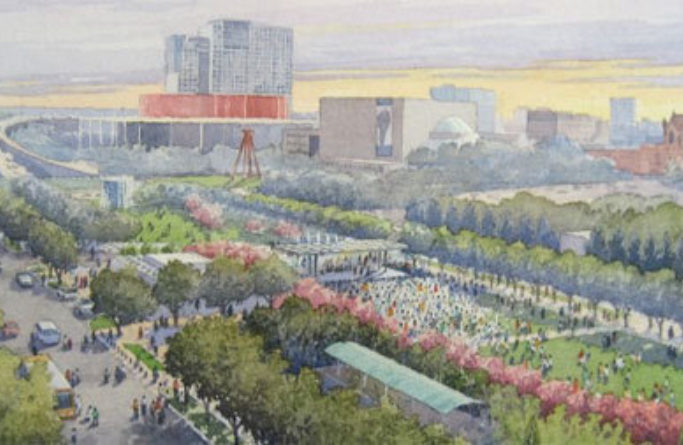Every weekend on the Woodall Rodgers Freeway in downtown Dallas, drivers hit a detour as crane operators and construction crews seize control of the highway.
“Anywhere from 80 to 100 men on this project at any given time,” said Texas Department of Transportation project manager Shane Harp. “It’s 24-7 around the clock, working.”
They are building a big piece of Dallas’ future: A 5.2-acre deck park over the highway from Pearl to St. Paul streets.
“It’s a very meticulous project,” said TxDOT project manager Duane Milligan. “It’s not easy to create ground, especially over a freeway.”
Huge concrete beams will make up the $100 million park’s foundation. “There’s approximately 305 beams on this project, and probably the heaviest one out here is probably 150,000 lbs.,” Harp explained.
One by one, cranes lift the 90-ton beams, each about 110 feet long. Workers then pull them into their slots.
“They [workers] average about 35 minutes from the time they pull the truck up and set the beam and release it from the crane,” Harp said.
So far, 43 beams are in place. Milligan said precision takes time.
“There’s not much room for error on this structure,” he said. “Everything is so interconnected.”
The beams have to support an extreme amount of weight, so designers and engineers built in safety features — including a waterproof membrane over the concrete foundation to protect the traffic in the tunnel underneath.
The soil that eventually goes on top will also play a role.
“It’s an engineered soil, specially designed to be lightweight and not overload the park structure,” Milligan said.
The number of trees and their placement was also pre-determined.
“Where we don’t have a deep rooted-plant, we will have what we call a “G Foam,” which is a Styrofoam product as kind of a filler,” Milligan said. “It’s very light and doesn’t weigh a lot.”
The park’s completion date is late 2012. Walking paths, a performance pavilion, and a restaurant are part of the vision.
For the crews behind it, every weekend’s work gives them a glimpse of a new city taking shape.
“To see it for real, really brings it out and gets you that much closer to imagine the real thing,” Milligan said.
Read the full article in The Oklahoman.
